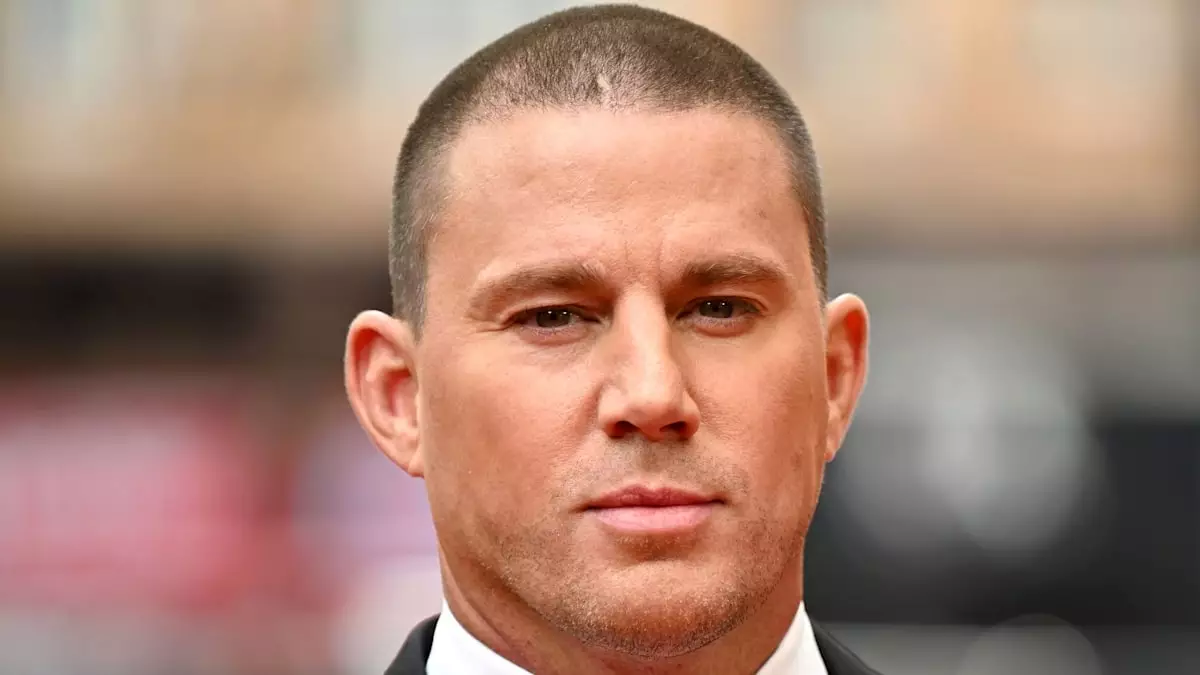In the glitzy realm of Hollywood, few phenomena generate as much intrigue as the dramatic physical transformations undertaken by actors. Channing Tatum, a talent known for his impressive athletic build, has stepped into this familiar territory, displaying both dedication and a willingness to undertake considerable risk for the sake of his craft. His recent social media posts serve as a compelling reminder of the extremes to which actors go to embody their characters, but they also raise critical questions about physical health and the pressures of conformity in an industry that often fetishizes unrealistic body standards.
The images Tatum shared, revealing significant weight fluctuations as he prepares for diverse roles, illustrate a valuable yet alarming trend within modern cinema. With fluctuations between 172 to 235 pounds documented in a series of selfies, Tatum exposes an unvarnished look at the often grueling demands placed on actors. He’s not alone; the comparison to Christian Bale—another actor famed for his rigorous transformations—serves to highlight the broader culture of sacrifice that has permeated Hollywood. While actors like Tatum and Bale may thrive creatively within their transformations, one must ponder what toll this performance art takes on their physical and mental health.
The Spotlight and Its Demands
The socio-cultural expectations historically associated with masculinity play a crucial role in these transformations. Tatum’s reflections on his journey—for instance, describing how challenging it can be to achieve such drastic changes—speak to the intense societal pressures that compel men to sculpt not just their bodies but also their identities. The dialogue surrounding his posts is rife with varying emotional responses; from admiration to concern, his followers grapple with the reality of how far Tatum is willing to push his limits for validation through the lens of art.
Feedback from celebrities and everyday followers alike reveals this tension. Comments range from awe to caution, illustrating the complex dynamic between artistic dedication and self-preservation. While Tatum’s gratitude for his support system—the chef, trainer, and “witch” who assist him in managing this weight transformation—suggests a level of strategic planning, it overlooks the inherent physical risks. The echoes of Bale’s cautionary tales about the detrimental effects of rapid weight fluctuations serve as a sobering backdrop to Tatum’s journey. The underlying theme is clear: at what point does the pursuit of a role morph into a potentially harmful obligation?
The Human Body as Canvas
The human body, in many ways, serves as a living canvas for actors like Tatum, allowing them to craft their performances through physicality. This concept of bodies as instruments of storytelling elevates the art of acting; however, it also invites a myriad of ethical concerns. As Tatum aptly noted, while he feels grateful for his “genetics,” it is the very act of hacking into the body’s inherent mechanisms that raises significant health questions. Intensive weight fluctuations can lead to long-lasting repercussions, and the lasting effects can include everything from metabolic disorders to psychological issues related to body image.
Moreover, the lack of disclosures around the potential dangers involved in such transformations emphasizes the need for greater awareness in an industry that often prioritizes outcomes over processes. Actors’ decisions to undergo extreme bodily changes should elicit reflective discussions about the standards set within Hollywood. Tatum’s experiences shine a light on the need for a more balanced discourse, promoting healthier practices and choices that respect the actor’s well-being while still honoring the demands of their calling.
Embracing a Sustainable Model
With growing awareness surrounding health and wellness, a cultural shift seems necessary in how actors approach body transformations. Rather than viewing these extreme changes as a rite of passage, there needs to be a push for more sustainable practices that honor not just the craft but the craftsperson. Tatum’s admission that he is moving away from “fat roles,” citing the physical toll on his body, indicates an evolving mindset that perhaps reflects a more holistic approach to artistry.
While Channing Tatum’s weight fluctuations speak volumes about artistic dedication, they also raise significant concerns surrounding the physical and emotional toll of such transformations. As the industry continues to evolve, it’s crucial for both the audience and practitioners to consider the multitude of factors at play in shaping not just performances but the overall well-being of those who bring these characters to life. The tale of Tatum’s physical transformation is both compelling and cautionary, highlighting the rich interplay between art and health in the high-stakes landscape of Hollywood.

